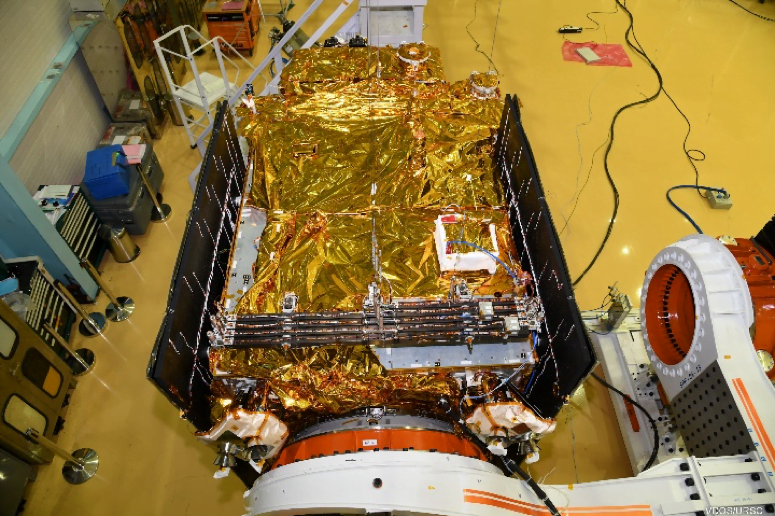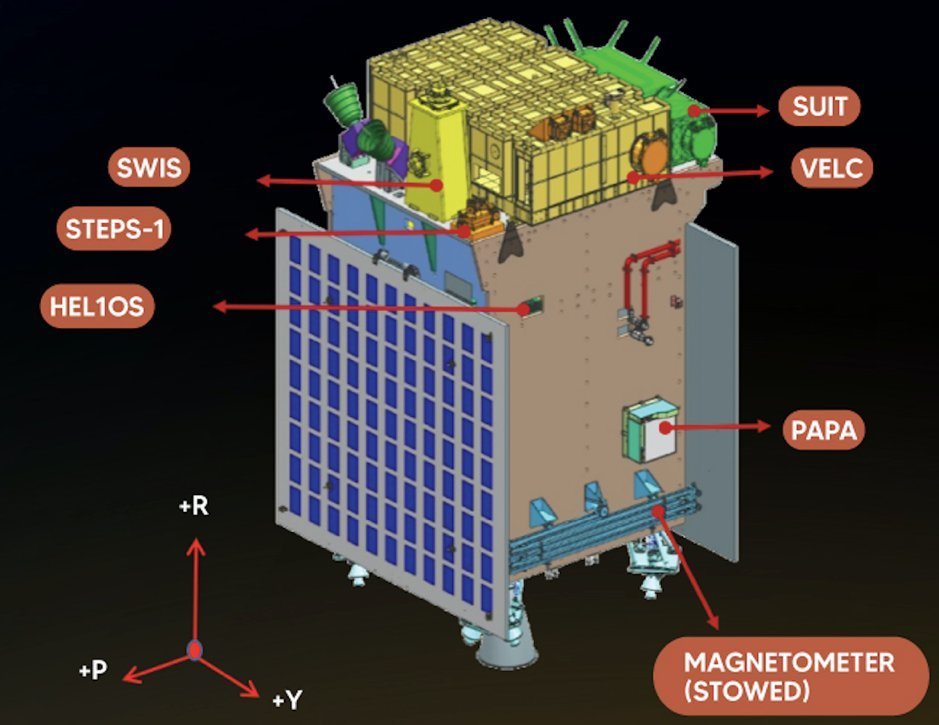The Magnetometer Sensor of Aditya L1 is deployed with the help of a 6-meter-long magnetometer boom that was in folded or closed condition for 132 days since launch. On January 11, 2024, ISRO successfully unfolded and expanded it to its full length of 6 meters. This boom mounts two state-of-the-art, high-accuracy fluxgate magnetometer sensors. ISRO announced on January 25, 2024, that it has successfully deployed the sensor. You can also visit our website for the latest updates on ISRO and other space missions from different space agencies.
When the boom is folded or closed, it’s firmly held in place by two secure hold-downs, which transfer the launch loads to the spacecraft body. The deployment of the boom in orbit took about 9 seconds, fitting well within the expected range of 8 to 12 seconds. All signals indicating the locking of the hinge and the release of the hold-downs were within the normal expected values.
Magnetometer Sensor of Aditya L1

The two highly advanced magnetometer sensors of Aditya L1, affixed to the boom, are designed to assess the low-intensity interplanetary magnetic field in space. Positioned at distances of 3 and 6 meters from the spacecraft body, this arrangement minimizes the potential impact of the spacecraft’s generated magnetic field on measurements. By employing two sensors, a more accurate estimation of this influence is achieved. The dual-sensor system is instrumental in effectively mitigating the spacecraft’s magnetic impact, enhancing the precision of the measurements.
The boom segments are made of a sturdy material called carbon fiber reinforced polymer. They act as platforms for attaching the sensors and mechanical components. The articulated boom mechanism consists of 5 segments connected by spring-driven hinge mechanisms, enabling the boom to fold and unfold as needed.
Note: The preceding information is extracted from an official press release issued by ISRO.
Read also Aditya L1 status: Aditya L1 Update & Live tracking and location of Aditya L1
Read also India Will Launch 50 AI-Powered Spy Satellites In the Next 5 Years


